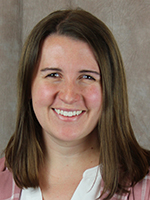
What does weather do to your calves?
 By Bethany Dado-Senn, Ph.D., Vita Plus dairy calf and heifer specialist
By Bethany Dado-Senn, Ph.D., Vita Plus dairy calf and heifer specialistAs a calf specialist, one of my core philosophies is the “calf care trifecta” – the calf, the farmer and the environment influence each other’s outcomes. For instance, farmers feed their calves, calves respond to the surrounding weather and weather dictates the ability of farmers to complete tasks.
Despite these interactions, the environment piece is often forgotten when building or modifying calf programs; we make changes to calf nutrition or health protocols without considering how weather might impact the program’s success. In addition, each season has its own challenges that should be accounted for in management decisions.
Winter
This past winter was challenging for many calf operations in the Midwest. Large shifts in temperature and frequent winter weather advisories kept calf feeders on their toes. Since calves are small and non-ruminant, they are susceptible to cold stress, which can negatively affect calf growth and decrease disease resistance.
When developing a winter strategy, consider increasing milk replacer mixing rates to 14.5% total solids or increasing total milk volume by 25% to 50%. Consistently offer starter concentrate and warm water, use calf blankets on younger calves, and ensure clean and abundant straw bedding. When reflecting on this last winter, review how your calves responded to the cold and what you might do differently next winter.
Spring
Spring often presents an increase in temperature fluctuation, precipitation and mud. From a nutrition standpoint, late spring is an ideal time to transition from winter to summer programs. Calves often respond poorly to spring temperature swings, particularly from a respiratory health perspective. Managing curtains and ventilation is critical. During the spring, 15 to 20 air changes per hour is recommended. Here are some suggested guidelines from the University of Wisconsin-Madison Dairyland Initiative:
- Below 40 degrees F: Close curtains and maintain well-designed positive pressure tubing.
- Between 40 and 70 degrees F: Adjust the top curtain as needed, depending on the weather.
- Above 70 degrees F: Open curtains completely.
When in doubt as to what “as needed” means for ventilation, remember that more is almost always better. Opening curtains wider provides additional fresh air for air quality and calf respiratory health. For the additional spring concerns like dampness and mud, focus on maintaining fresh bedding and minimizing vehicle traffic to prevent mud dispersion. Applying a bedding desiccant during pen transitions might be useful.
Summer
Summer welcomes warmth and humidity. Although calves are less likely to be heat-stressed relative to cows, they can still undergo reduced grain intakes, lower average daily gains, and increased respiratory incidences. More research is needed to determine the optimal summer milk feeding, but a constant supply of water is an ideal starting point. Providing warm water after milk, even in the summer, encourages starter intake and hydration. Offering blanket electrolytes during periods of stress also can be helpful in promoting calf hydration and mineral status. Passive ventilation through hutch windows or open curtains is the most common strategy for calf heat abatement, but other strategies like hutch orientation and the use of fans are also effective.
Fall
Finally, the fall season transitions to cooler weather and temperature fluctuations. Just as in spring, carefully monitor curtain and ventilation strategies. Look to transition to winter management programs using the “Rule of 90.” When minimum day and night temperatures combined are less than 90 degrees F, it’s time to put on calf jackets and review feeding programs.
Regardless of the time of year, a calf’s surrounding environment plays a critical role in management success. By accounting for weather in calf nutrition, housing, and health programs, we can help calves smoothly transition through change and reach their productive potential.
| Category: |
Animal health Calf and heifer nutrition Heat stress Starting Strong - Calf Care |

